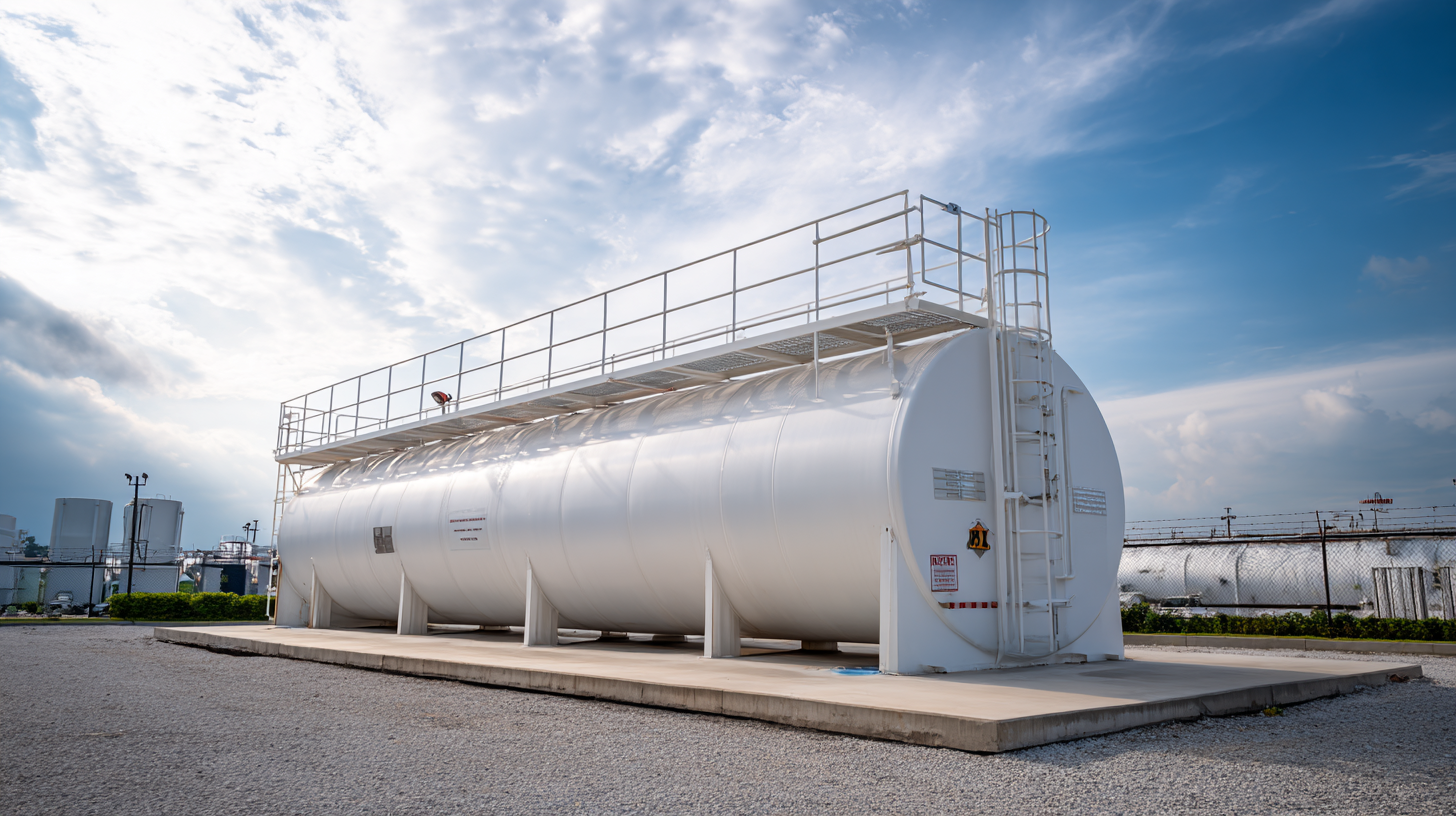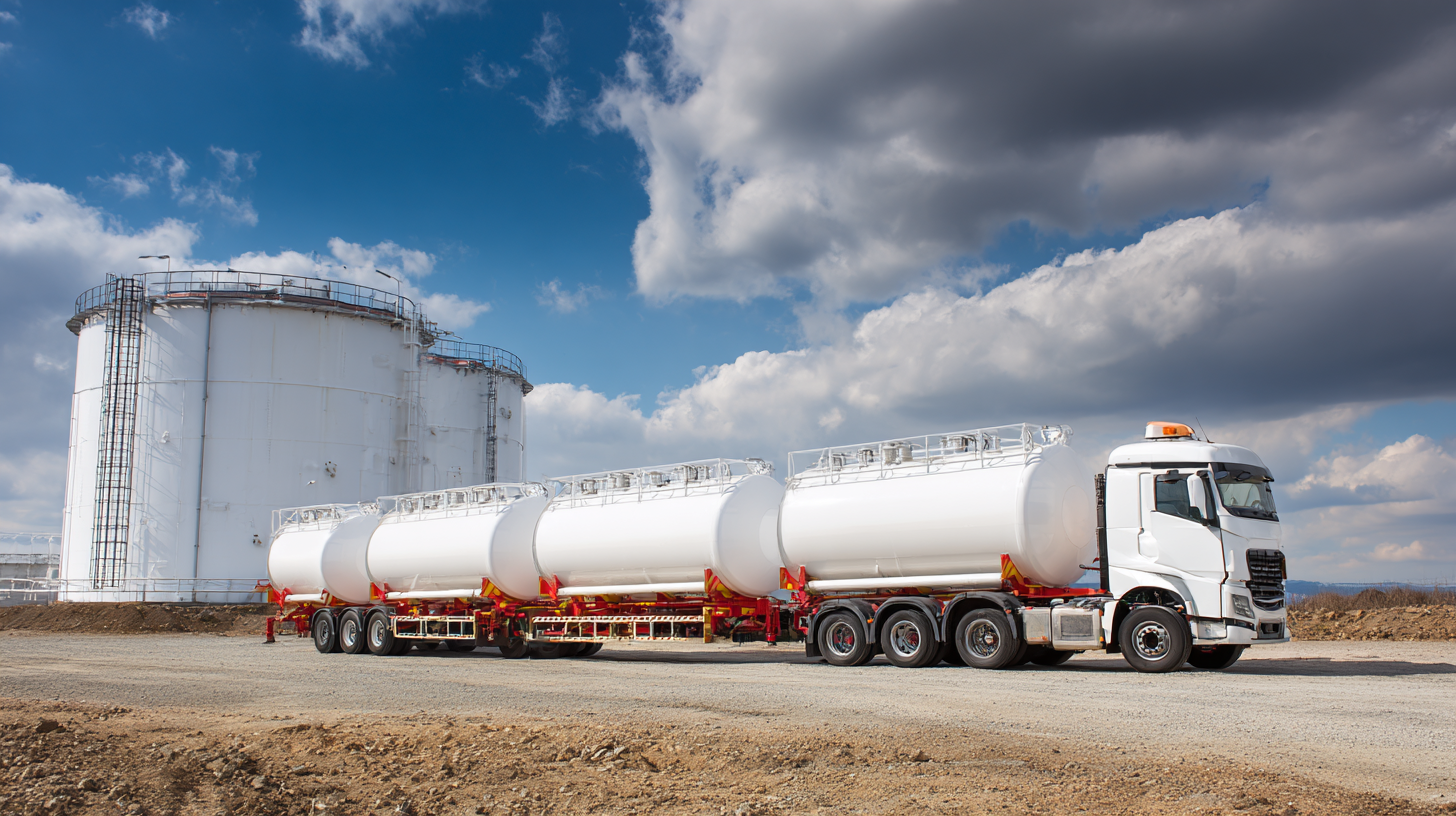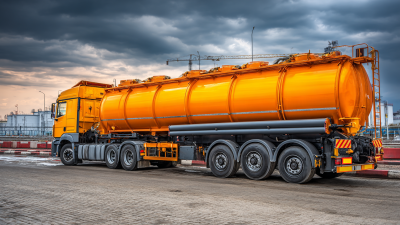The Ultimate Guide to Diesel Storage Tank Capacity Requirements and Safety Regulations in 2023
In 2023, the regulatory landscape for diesel storage tanks has become increasingly stringent, reflecting the growing emphasis on safety and environmental responsibility in the energy sector. According to the U.S. Environmental Protection Agency (EPA), there are over 550,000 aboveground and underground storage tanks in operation, with diesel fuel comprising a significant portion of this infrastructure. It is crucial for operators and facility managers to understand the capacity requirements and safety regulations associated with diesel storage tanks to mitigate risks of spills and leaks. Furthermore, the National Fire Protection Association (NFPA) estimates that improper tank maintenance contributes to a substantial number of accidents annually. This guide serves as a comprehensive resource, offering valuable tips and insights into compliance and best practices, ensuring that your diesel storage solutions meet both safety standards and operational efficiency.

Understanding Diesel Storage Tank Capacity: Key Considerations
When considering diesel storage tank capacity, several key factors must be taken into account to ensure compliance with safety regulations and operational efficiency. According to the latest industry standards, the capacity requirements depend significantly on the intended use, location, and environmental regulations. For example, tanks must sometimes accommodate at least 10 days of operational supply to mitigate risks associated with supply chain disruptions, particularly during geopolitical uncertainties that could impact trade routes and fuel availability.
Additionally, the design of storage tanks must adhere to stringent safety regulations to prevent spills and leaks that can harm the environment. In recent reports, regulatory bodies have underscored the importance of having secondary containment measures in place, which can increase capacity requirements by roughly 25%. This is especially relevant as industries explore alternative fuels like biodiesel and renewable diesel, which may have different storage specifications and compatibility with existing infrastructure. As such, understanding these capacity considerations is crucial for effective fleet management and ensuring compliance with both safety and environmental standards.
Essential Safety Regulations for Diesel Storage Tanks in 2023
When it comes to diesel storage tanks, adhering to essential safety regulations is critical to ensure both environmental protection and operational efficiency. In 2023, the Environmental Protection Agency (EPA) emphasizes strict compliance with storage tank regulations, which mandates facilities to have a Spill Prevention, Control, and Countermeasure (SPCC) plan in place if their total oil storage capacity exceeds 1,320 gallons. Proper maintenance and regular inspections can prevent leaks that not only pose safety risks but also lead to costly fines and environmental degradation.
To maintain safety and compliance, operators should implement routine risk assessments and training for staff on handling practices, as recommended by the American Petroleum Institute (API). The National Fire Protection Association (NFPA) also advises that storage tanks should be equipped with overfill alarms and secondary containment systems to mitigate the impact of potential spills.
**Tips:** Regularly update training materials to reflect the latest safety protocols and invest in technology that continuously monitors tank levels. Conduct quarterly inspections of your storage facility to detect wear and tear early, ensuring immediate action can be taken if safety concerns arise. Remember, failing to comply with regulations can lead to significant legal repercussions and financial loss, making proactive safety measures essential for every diesel storage operation.
The Ultimate Guide to Diesel Storage Tank Capacity Requirements and Safety Regulations in 2023
Calculating Your Diesel Storage Tank Requirements for Efficiency
Calculating the appropriate capacity for your diesel storage tank is crucial for ensuring operational efficiency and compliance with safety regulations. When determining your needs, consider factors such as the frequency of diesel usage, the type of equipment being fueled, and the average consumption rates. A thorough understanding of these variables allows you to select a tank size that minimizes unnecessary refueling trips while maintaining an adequate supply for peak operational periods.
In addition to operational considerations, it is essential to adhere to safety regulations governing diesel storage. Specific guidelines dictate tank placement, environmental protections, and spill prevention measures. Calculating the right tank capacity also involves ensuring that it meets local regulations concerning secondary containment and ventilation. This approach not only ensures compliance but also enhances safety by reducing the risk of leaks or spills in your storage area, thereby safeguarding personnel and the environment.
The Ultimate Guide to Diesel Storage Tank Capacity Requirements and Safety Regulations in 2023
| Tank Size (Gallons) | Tank Type | Recommended Minimum Distance from Structures (Feet) | Secondary Containment Required | Typical Use Cases |
|---|---|---|---|---|
| 500 | Above Ground | 10 | Yes | Small commercial operations |
| 1000 | Above Ground | 10 | Yes | Medium scale industries |
| 2000 | Above Ground | 15 | Yes | Large construction sites |
| 5000 | Above Ground | 20 | Yes | Fleet fueling stations |
| 10000 | Below Ground | 25 | Yes | Large agricultural operations |
Best Practices for Maintaining Diesel Storage Tank Safety Standards
When it comes to maintaining diesel storage tank safety standards, implementing best practices is essential for minimizing risks associated with fuel storage. One of the fundamental steps is conducting regular inspections of the tanks and associated infrastructure. This involves checking for leaks, corrosion, and signs of wear, which can compromise the integrity of the tank. Establishing a routine maintenance schedule and keeping detailed records can help identify potential issues before they escalate into significant problems.

Another critical aspect of safety is ensuring proper training for personnel who handle diesel storage. Employees should be aware of safety protocols, emergency response procedures, and the specific regulations governing diesel fuel storage in their jurisdiction. Providing continuous education and drills can empower staff to act swiftly and effectively during emergencies, thus safeguarding both personnel and property. Additionally, implementing spill prevention measures, such as using secondary containment systems, can further mitigate environmental risks associated with spills or leaks.
Common Mistakes to Avoid in Diesel Storage Tank Management
When managing diesel storage tanks, one of the most common mistakes is underestimating the importance of
proper tank labeling and documentation.
Without clear labeling that indicates the contents and associated hazards, personnel may unintentionally expose themselves
to risks, leading to accidents or spills. It's essential to maintain thorough records of all tank inspections,
maintenance activities, and fuel usage to ensure compliance with safety regulations and to facilitate emergency response
if needed.
Another prevalent error is neglecting routine maintenance and inspections.
Failing to regularly check for leaks, corrosion, or other structural issues can lead to significant safety hazards,
including environmental contamination and financial losses. Implementing a proactive maintenance schedule not only enhances
safety but also extends the lifespan of the tank, providing a better return on investment. Training staff to recognize
early warning signs and ensure compliance with safety protocols is crucial for effective diesel storage tank management.

Related Posts
-

How to Choose the Right Diesel Tank for Your Business Needs Based on Industry Standards
-

Ultimate Guide to Sourcing High Quality Diesel Tanks for Your Business Needs
-

Understanding the Importance of Proper Maintenance for Your Diesel Fuel Tank
-

Understanding the Importance of Proper Maintenance for Your Diesel Tank System
-

Unlocking Efficiency and Cost Savings with Advanced Fuel Transfer Pump Solutions
-

How to Select the Right Centrifugal Pump for Your Industrial Applications